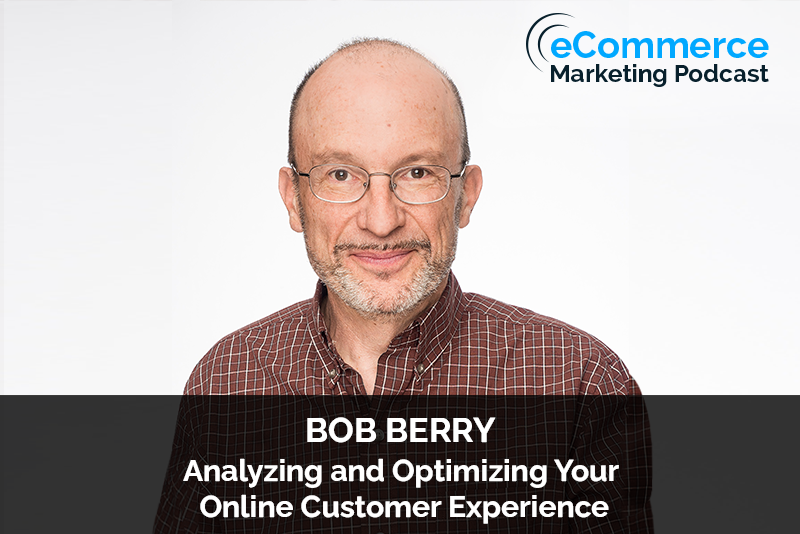
The eCommerce Marketing Podcast walks you through everything that goes into ecommerce marketing — from inbound marketing to paid advertising to conversions. Learn the strategies top marketing experts use to grow their businesses.
Marketing Strategies Revealed in this Episode:
- Where an ecommerce business should begin when it comes to analyzing the experience that prospects and customers have on their websites
- Things that can help improve the online experience
- Mission critical insights that can be understood when analyzing your customers experience
- Main points of outcome that an ecommerce business should be striving to change by improving the customer experience

Episode Title: Optimizing Online Customer Experience with Bob Berry
Host: Arlen Robinson
Guest: Bob Berry, Principal at AnswerLab and Founder of The Human-Computer MasterMind Academy
In this episode, Arlen Robinson talks with Bob Berry about creating optimal online experiences, especially in the context of the coronavirus pandemic. Bob, who has extensive experience working with tech giants like Google, Apple, Amazon, and Facebook, shares his insights on enhancing customer experience in eCommerce.
Key Takeaways:
- Introduction to Bob Berry (00:15)
- Bob’s background and experience with companies like HP and AnswerLab, and his focus on creating optimal online experiences.
- Starting with Customer Experience (02:45)
- Understanding the customer’s life, challenges, and needs before optimizing their online experience.
- Analyzing and Optimizing Customer Experience on a Budget (05:30)
- Starting small with no budget, demonstrating outcomes, and justifying further investment. Example: Deluxe Corporation’s transition.
- Importance of Customer Experience and Customer Service (10:10)
- The interplay between customer experience and customer support, emphasizing seamless transitions and minimizing friction points.
- Handling Short Attention Spans (13:50)
- Techniques to keep users engaged by understanding where they lose focus and ensuring seamless transitions.
- Technical Functionality and User Testing (20:20)
- Ensuring that eCommerce systems work across various devices and environments to prevent technical breakdowns.
- Adapting to the Coronavirus Era (24:00)
- Examples of businesses innovating during the pandemic, such as virtual consultations and remote customer interactions.
- Insights from Big Players in eCommerce (29:40)
- Protecting employees and customers, leveraging virtual experiences, re-evaluating customer data, and embedding user experience in company culture.
Bob Berry is a Principal at AnswerLab, where he guides major companies in optimizing online experiences. He is also the founder of The Human-Computer MasterMind Academy.
Contact Bob Berry:
- Website: ecom.itstheusers.com











